Explore the Evolution of Handrail Systems
Explore the evolution of handrails—an architectural element that has transcended its basic utility to become a symbol of safety, style, and technological advancement through the ages.
Explore the evolution of handrails—an architectural element that has transcended its basic utility to become a symbol of safety, style, and technological advancement through the ages.
The journey of the handrail—a seemingly humble component of architectural design—mirrors the evolution of civilization itself, reflecting advances in technology, aesthetics, and our understanding of human ergonomics.
The inception of handrails can be traced back to the ancient civilizations of Egypt and Mesopotamia, where simple handholds were carved into walls to assist in ascending steep pathways. As the era of architectural sophistication began, the Greeks and Romans introduced more formalized handrail systems, often ornately crafted from stone and metal. These systems presented functional benefits and were emblems of wealth and power.
Throughout the medieval period and into the Renaissance, the function of handrails evolved concurrently with architectural styles. Gothic cathedrals exhibited handrails as part of their intricate stonework, while in the grand palaces of the Renaissance, balustrades became status symbols—beautifully crafted and designed to impress. In these periods, the dual purpose of handrails—for safety and as an aesthetic complement to architecture—truly took hold.
The evolution of handrail safety regulations is a testament to society’s growing commitment to building safety. Initially, there were no standardized codes, and handrail design varied widely, often resulting in inconsistent and unsafe installations. The imperative for safe, reliable handrails became clear as buildings rose taller. This realization spurred the development of building codes and regulations designed to ensure the safety and integrity of stairways and handrails.
Building codes have come to dictate how handrails are constructed and implemented. Key among these are the International Building Code (IBC) and the International Residential Code (IRC), stipulating heights, load requirements, and material specifications to ensure robust handrail systems. These codes undergo regular updates to adapt to new materials, construction methods, and safety research findings.
With regulations outlining strict criteria for handrail height, circumference, and strength, architects and designers must integrate safety code requirements creatively into building aesthetics. As a result, handrails have evolved as safety features and enhance the overall design narrative of a space, selectively using materials and shapes that reflect compliance and style.
Here are a few trends over the years:
The evolution of handrail systems is a testament to the blend of safety, aesthetics, and innovative engineering. Over time, handrail materials have progressed to incorporate advances in material science and a deeper understanding of environmental sustainability.
Traditionally, handrails have been forged from iron and steel, materials prized for their strength and durability. These metals served as the backbone of construction for centuries, ensuring the structural integrity of handrail systems in homes and public buildings. However, the advent of modern engineering has seen a shift towards lighter, more flexible materials.
Durability remains a core concern when selecting handrail materials, yet we now also consider the environmental impact. Material choice has expanded to include eco-friendly options like recycled plastics and composites, which not only withstand the rigors of heavy use but also help reduce the carbon footprint of production.
Innovation in materials science has been pivotal in the evolution of handrail systems. Aluminum, glass, and stainless steel have emerged as popular choices, offering a sleek look and high functionality. Smart materials that can resist corrosion, reduce maintenance costs, and integrate seamlessly with modern design aesthetics have become increasingly commonplace. These innovative materials have led to more supportive handrails integral to a building’s design theme.
Advances in handrail materials have led to improvements like:
P P Artec offers innovative railing solutions. From the sleek elegance of glass to the robustness of stainless steel, we help you integrate modern, safe, and aesthetically pleasing handrail systems into your architecture.
The evolution of handrail systems has given rise to an era in which these once purely functional elements demonstrate a blend of safety and aesthetic appeal. Handrails have transcended their conventional roles, becoming integral components that influence and are influenced by contemporary architectural design.
Iconic buildings worldwide showcase the innovative integration of handrails within their design. For instance, the spiraling handrails of the Guggenheim Museum in New York complement the building’s unique helical structure, guiding visitors through the continuous gallery space without interrupting their visual experience of the art it houses.
Contemporary design demands that handrails offer safety features and contribute to the overall architectural expression. The balance between functionality and form is evident in minimalist designs, where clean lines and sleek materials allow handrails to blend into the structure, enhancing the visual presentation without compromising safety.
Architects and designers now view handrails as versatile tools that can enhance the spatial quality of a structure, create visual interest, and even act as a focal point within a space. Public and private projects that have successfully integrated handrails into their design, establishing new standards for aesthetic appeal and safety in architecture.
Modern architecture values:
P+P Artec offers cutting-edge glass and stainless steel railings that exemplify modern innovation. We take great pride in ensuring that each phase, from your initial consultation to the final installation, adheres to our high standards of excellence. Our customized railing solutions meet contemporary architecture’s aesthetic demands and address your project’s functional requirements.
We translate ideas into realities, providing unwavering support throughout the project lifecycle. We streamline project management, creating peace of mind and instilling confidence at every step. Artec
Ready to bring your vision to life? Reach out today.
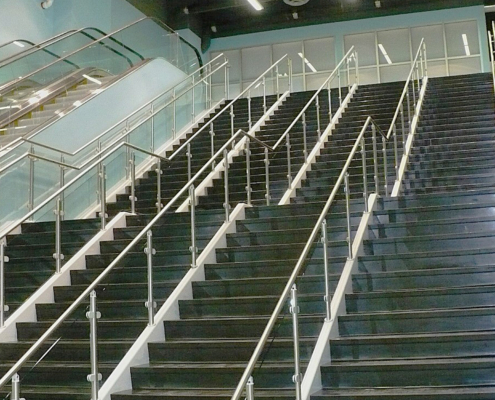 https://www.artec-rail.com/wp-content/uploads/2024/09/Terminal-18-1.jpg
1250
2000
Abstrakt Marketing
/wp-content/uploads/2024/02/P-and-P-Artec-Logo-V2.png
Abstrakt Marketing2025-04-25 09:58:272025-04-27 10:28:25When Should You Replace Your Interior Glass Railing System?
https://www.artec-rail.com/wp-content/uploads/2024/09/Terminal-18-1.jpg
1250
2000
Abstrakt Marketing
/wp-content/uploads/2024/02/P-and-P-Artec-Logo-V2.png
Abstrakt Marketing2025-04-25 09:58:272025-04-27 10:28:25When Should You Replace Your Interior Glass Railing System?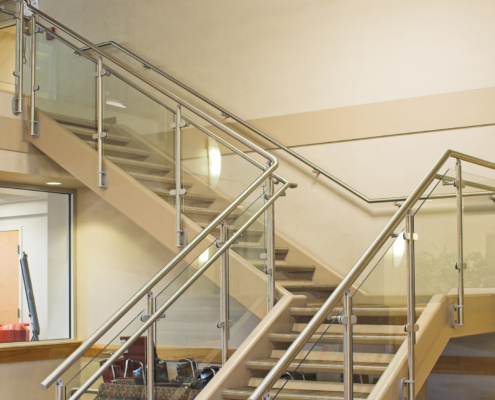 https://www.artec-rail.com/wp-content/uploads/2024/09/MGH-Hospital-1.jpg
1250
2000
Abstrakt Marketing
/wp-content/uploads/2024/02/P-and-P-Artec-Logo-V2.png
Abstrakt Marketing2025-04-23 10:15:132025-04-27 10:28:26Questions to Ask Before Purchasing Rail Installation Services
https://www.artec-rail.com/wp-content/uploads/2024/09/MGH-Hospital-1.jpg
1250
2000
Abstrakt Marketing
/wp-content/uploads/2024/02/P-and-P-Artec-Logo-V2.png
Abstrakt Marketing2025-04-23 10:15:132025-04-27 10:28:26Questions to Ask Before Purchasing Rail Installation Services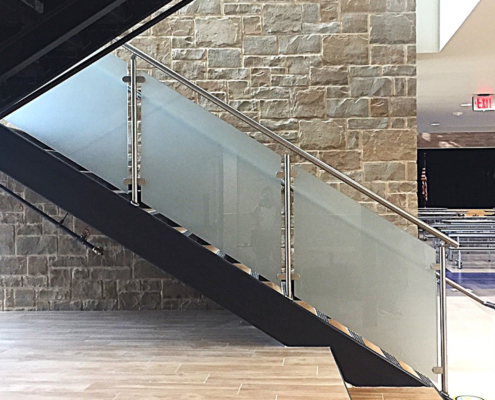 https://www.artec-rail.com/wp-content/uploads/2024/09/HASLET-ELEMENTARY-1.jpg
1250
2000
Abstrakt Marketing
/wp-content/uploads/2024/02/P-and-P-Artec-Logo-V2.png
Abstrakt Marketing2025-04-18 14:45:412025-04-27 10:28:26Why Modern Railing Systems Are a Must-Have for Retail Spaces
https://www.artec-rail.com/wp-content/uploads/2024/09/HASLET-ELEMENTARY-1.jpg
1250
2000
Abstrakt Marketing
/wp-content/uploads/2024/02/P-and-P-Artec-Logo-V2.png
Abstrakt Marketing2025-04-18 14:45:412025-04-27 10:28:26Why Modern Railing Systems Are a Must-Have for Retail Spaces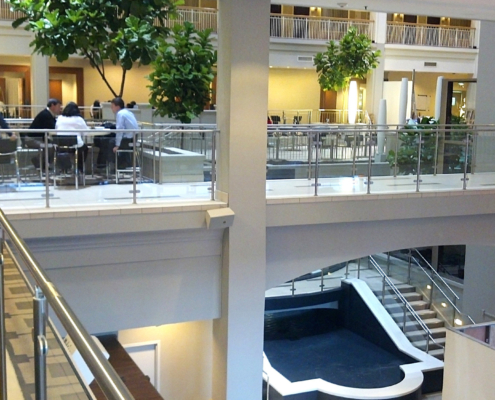 https://www.artec-rail.com/wp-content/uploads/2025/02/Side-view-of-artec-rail-in-luxury-hotel-space.jpg
1250
2000
Abstrakt Marketing
/wp-content/uploads/2024/02/P-and-P-Artec-Logo-V2.png
Abstrakt Marketing2025-02-27 09:05:352025-04-27 10:28:27How to Add a Touch of Luxury With Custom Railings
https://www.artec-rail.com/wp-content/uploads/2025/02/Side-view-of-artec-rail-in-luxury-hotel-space.jpg
1250
2000
Abstrakt Marketing
/wp-content/uploads/2024/02/P-and-P-Artec-Logo-V2.png
Abstrakt Marketing2025-02-27 09:05:352025-04-27 10:28:27How to Add a Touch of Luxury With Custom Railings https://www.artec-rail.com/wp-content/uploads/2025/02/Side-view-of-outdoor-railing-in-university-setting.jpg
1250
2000
Abstrakt Marketing
/wp-content/uploads/2024/02/P-and-P-Artec-Logo-V2.png
Abstrakt Marketing2025-02-27 08:55:422025-04-27 10:28:28Durable Railing Systems: What You Need to Know for High-Traffic Areas
https://www.artec-rail.com/wp-content/uploads/2025/02/Side-view-of-outdoor-railing-in-university-setting.jpg
1250
2000
Abstrakt Marketing
/wp-content/uploads/2024/02/P-and-P-Artec-Logo-V2.png
Abstrakt Marketing2025-02-27 08:55:422025-04-27 10:28:28Durable Railing Systems: What You Need to Know for High-Traffic Areas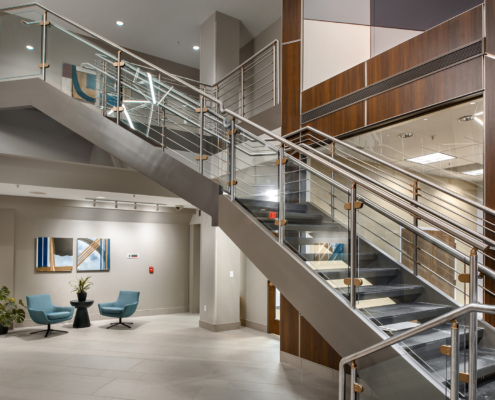 https://www.artec-rail.com/wp-content/uploads/2025/02/Side-view-of-commercial-railing-in-office-area.jpg
1250
2000
Abstrakt Marketing
/wp-content/uploads/2024/02/P-and-P-Artec-Logo-V2.png
Abstrakt Marketing2025-02-27 08:47:372025-04-27 10:28:28How Commercial Railing Systems Add Value to Your Properties
https://www.artec-rail.com/wp-content/uploads/2025/02/Side-view-of-commercial-railing-in-office-area.jpg
1250
2000
Abstrakt Marketing
/wp-content/uploads/2024/02/P-and-P-Artec-Logo-V2.png
Abstrakt Marketing2025-02-27 08:47:372025-04-27 10:28:28How Commercial Railing Systems Add Value to Your Properties https://www.artec-rail.com/wp-content/uploads/2024/05/900-Church-6.jpg
1250
2000
Abstrakt Marketing
/wp-content/uploads/2024/02/P-and-P-Artec-Logo-V2.png
Abstrakt Marketing2025-01-29 14:50:282025-04-27 10:28:29Enhancing Safety and Style With Glass Railings for Pool
https://www.artec-rail.com/wp-content/uploads/2024/05/900-Church-6.jpg
1250
2000
Abstrakt Marketing
/wp-content/uploads/2024/02/P-and-P-Artec-Logo-V2.png
Abstrakt Marketing2025-01-29 14:50:282025-04-27 10:28:29Enhancing Safety and Style With Glass Railings for Pool 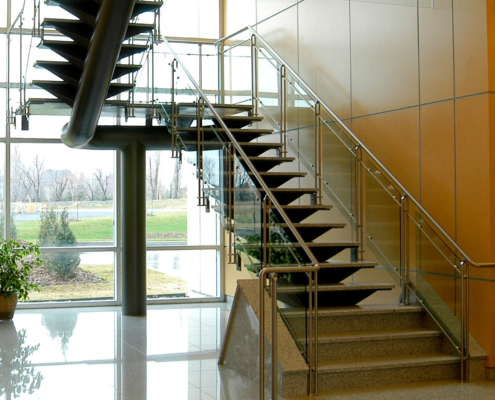 https://www.artec-rail.com/wp-content/uploads/2024/07/canada3.jpg
1250
2000
Abstrakt Marketing
/wp-content/uploads/2024/02/P-and-P-Artec-Logo-V2.png
Abstrakt Marketing2025-01-29 14:27:582025-04-27 10:28:29Installing Glass Staircase Railings to Add Value to Your Property
https://www.artec-rail.com/wp-content/uploads/2024/07/canada3.jpg
1250
2000
Abstrakt Marketing
/wp-content/uploads/2024/02/P-and-P-Artec-Logo-V2.png
Abstrakt Marketing2025-01-29 14:27:582025-04-27 10:28:29Installing Glass Staircase Railings to Add Value to Your Property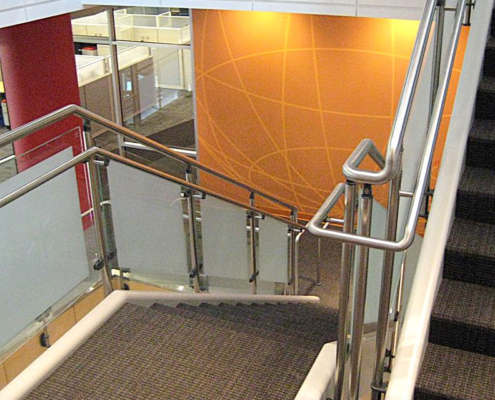 https://www.artec-rail.com/wp-content/uploads/2024/09/HSBC-5.jpg
640
1024
Abstrakt Marketing
/wp-content/uploads/2024/02/P-and-P-Artec-Logo-V2.png
Abstrakt Marketing2025-01-29 14:21:242025-04-27 10:28:30Cost of Glass Railing—Are They Worth the Investment?
https://www.artec-rail.com/wp-content/uploads/2024/09/HSBC-5.jpg
640
1024
Abstrakt Marketing
/wp-content/uploads/2024/02/P-and-P-Artec-Logo-V2.png
Abstrakt Marketing2025-01-29 14:21:242025-04-27 10:28:30Cost of Glass Railing—Are They Worth the Investment?Phone
Tel: 800.927.7346
Fax: 630.860.5913
Email
bids@artec-rail.com
P+P Artec delivers detail in every custom railing system we create. We design for homes and businesses nationwide.

 Meeting Building Codes and Regulations for Handrails for Stairs
Meeting Building Codes and Regulations for Handrails for StairsThis site uses cookies. By continuing to browse the site, you are agreeing to our use of cookies.
OKLearn moreWe may request cookies to be set on your device. We use cookies to let us know when you visit our websites, how you interact with us, to enrich your user experience, and to customize your relationship with our website.
Click on the different category headings to find out more. You can also change some of your preferences. Note that blocking some types of cookies may impact your experience on our websites and the services we are able to offer.
These cookies are strictly necessary to provide you with services available through our website and to use some of its features.
Because these cookies are strictly necessary to deliver the website, refusing them will have impact how our site functions. You always can block or delete cookies by changing your browser settings and force blocking all cookies on this website. But this will always prompt you to accept/refuse cookies when revisiting our site.
We fully respect if you want to refuse cookies but to avoid asking you again and again kindly allow us to store a cookie for that. You are free to opt out any time or opt in for other cookies to get a better experience. If you refuse cookies we will remove all set cookies in our domain.
We provide you with a list of stored cookies on your computer in our domain so you can check what we stored. Due to security reasons we are not able to show or modify cookies from other domains. You can check these in your browser security settings.
We also use different external services like Google Webfonts, Google Maps, and external Video providers. Since these providers may collect personal data like your IP address we allow you to block them here. Please be aware that this might heavily reduce the functionality and appearance of our site. Changes will take effect once you reload the page.
Google Webfont Settings:
Google Map Settings:
Google reCaptcha Settings:
Vimeo and Youtube video embeds:

